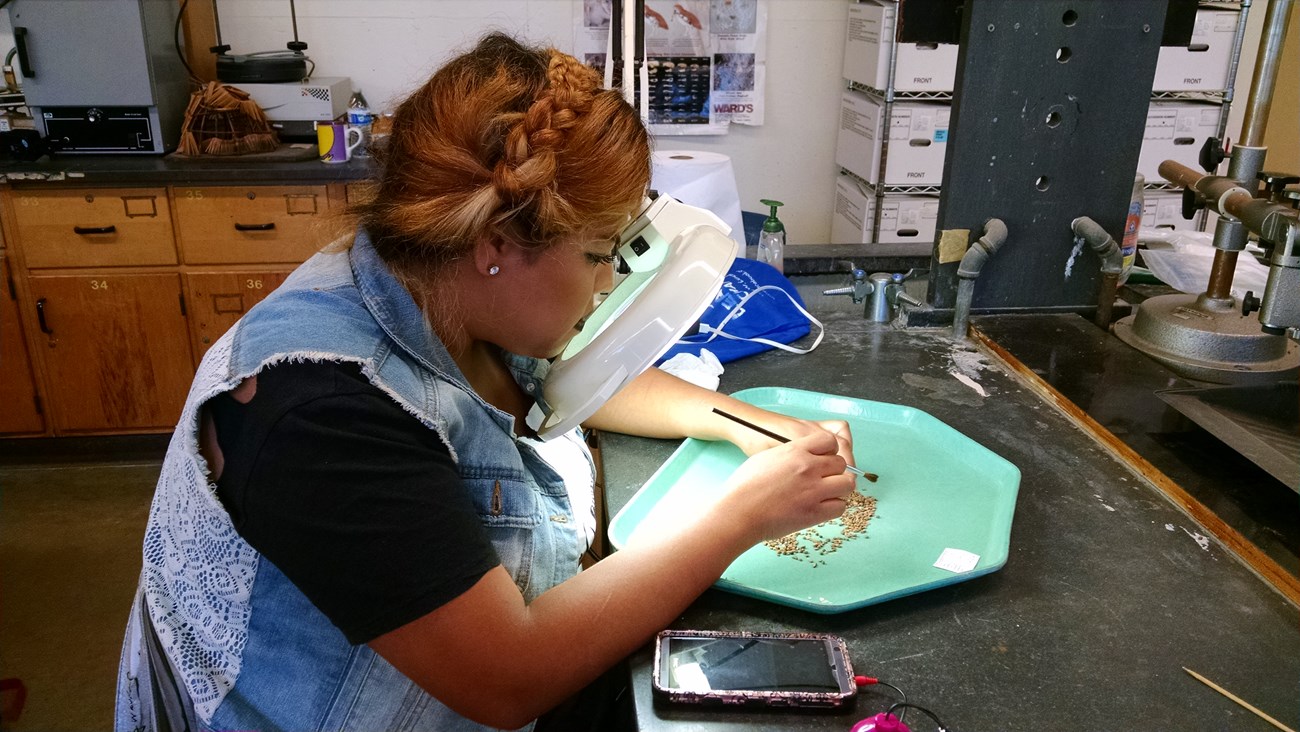Last updated: March 6, 2023
Article
The Archeology Lab

Contrary to what you might think, archeologists spend most of their time in artifact labs, not excavating. The lab is where archeologists get a close look at the finds from an excavation.
Archeological collections are like a library full of objects. They can help you research lots of questions, such as: What did families do for fun before television was invented? Who lived in your state before you? Where did kids hang out?
Broken, chipped, but sometimes whole -- artifacts come in many forms. Excavators often find artifacts made from pottery, glass, or stone, which last longer in the ground than food or leather. Durable materials, such as metal nails or stone tools, and even dirt samples, tend to be a big part of an artifact collection because they are better preserved over time.
In the lab, archeologists look at how often and where they found different types of artifacts. This information helps them understand what people did at a place and suggests what their activities meant to them.
Washing removes gunk. Most artifacts are brushed clean with a toothbrush and water, then left to dry. Water harms organic and metal artifacts, so they need special treatment.
Critters, bugs, and fungi -- these are the enemies of archeology conservators. Debugging and washing artifacts are the first steps to process a collection.
Cataloging identifies the artifacts and makes a record of them. To do the job well, archeologists need to know when and how things were made, and their names, styles, and uses.
Each artifact gets a number coded with where archeologists found it. Artifacts go into archival plastic baggies. They are arranged in archival boxes by the unit and layer. Archival packaging helps preserve the artifacts.
Conservators use chemistry and other sciences to figure out how best to preserve collections so they won't corrode and disintegrate away. The conservation lab is where they take special care of fragile materials, like corroding hardware found in bays or boats from river bottoms.
Once an archeological site is excavated, the collections are the irreplaceable evidence of the research. They are also unique snapshots of past life. Protecting archeological collections from bugs, animals, and decay ensures that they will be useful for a long time.
To interpret a site, archeologists look again at their research and examine their excavation finds and notes.
The collections show how people in the past spent their time. We can imagine them quenching thirst or eating at a party. We see that they, too, lost fancy buttons and see the small things in their pockets. Collections show us what people built with, and played with, but a lot of the total picture goes missing.
What happens next to an archeological collection? Museums make exhibits, programs for kids, and help researchers to use them. Archeologists use the artifacts to write their excavation reports. They also enter everything into a computer database.
Even after a collection is put away, its work isn't done. In fact, the next person to use it might be you! Use collections to learn about the past environments, places, and people who lived before us.
